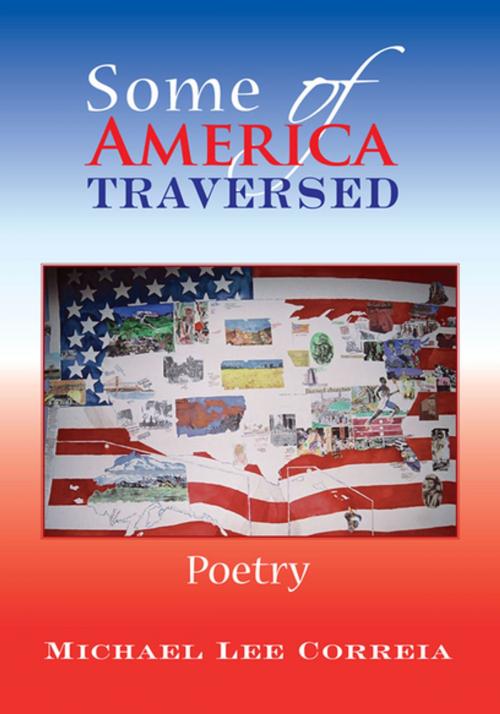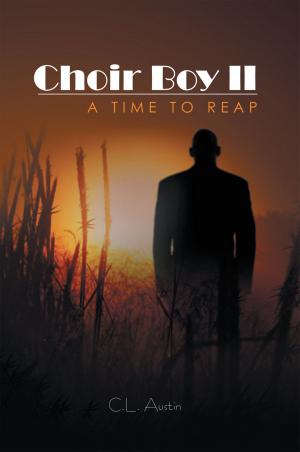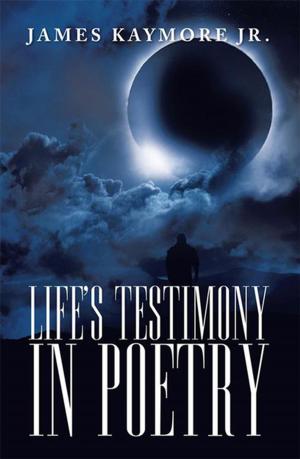| Author: | Michael Lee Correia | ISBN: | 9781462842322 |
| Publisher: | Xlibris US | Publication: | November 18, 2009 |
| Imprint: | Xlibris US | Language: | English |
| Author: | Michael Lee Correia |
| ISBN: | 9781462842322 |
| Publisher: | Xlibris US |
| Publication: | November 18, 2009 |
| Imprint: | Xlibris US |
| Language: | English |
It is a collection of poetry written by the poet, mindful of the epic proportions of poetry, the musicality of language, the seasons, and the evolution of America. The seasons forever form the structural sky, earth, and people of this poetry collection. Part I: Autumn In America, epic in tone, sweep, setting, scope, language and myth relates the history of the Goddess of Autumn (autumn itself), as the season introduces the climate and induces cultural and social, religious customs- especially annual Thanksgiving, as well as Halloween. Throughout the poem, the Goddess of Autumn will be given credit as she gradually, day to day, generates our annual storms, frost, ice snow and winds, in the various regions of the Americas. Thanksgiving describes the Pilgrims and their arrival on the Mayflower from Plymouth England to Plymouth Rock and the resulting gardens grown in their plantation. Even prior to that event, Thanksgiving in Autumn in America: Introduction imagines and describes this resonating, resilient event as its practiced in many parts of the world. The poet celebrates and interprets its customs world-wide, conscious of emerging allusions to classical, biblical and primitive myth. As to its structure, in the main body of this long poem, organized into ten, measured chapters (in the manner of a novel, due to its length and the familiarity of the educated reader with novels), the poet imagines the original scenes and values of Thanksgiving, as compared and contrasted now, with citizens annual remembrance celebrations. So the Native Americans generously shared their hunted, fished and grown food and some of their artistically crafted wares with the Pilgrims. They intended to assist and help these first immigrants to prevail the harsh New England winters and to exchange, as well as respect each ones culture and set of beliefs. In contrast and comparison, the poet describes what Thanksgiving has now evolved into and why those original values have today been synthesized, due to accelerated materialism and technology, and so lost to many of us. The short poem, Autumn& Music In theWorld, attempts to enhance my theme of the seasons, within the differing regions of the U.S. and the Americas, and any links to the international community, throughout the repertoire of classical and popular music in general. The long poem, A Hymn to the Different Colors And Forms of Autumn Leaves (Une Hyme `a les Couleurs et les Formes de les Feuilles de lAutumn),expresses the aesthetic colors and forms of the autumn leaves found on the grounds of a Florida tourist resort. The poem, a reverie into the aesthetic autumn in its profusion, also poses the irony and question of a possible imagined future of all this beauty, in the discursive narrative terms of what that beauty might decay into with Time set in the future. What might archaeologists surmise, who might excavate the sight of the resort and its human artifacts and flora then? 3 Spenserian Sonnets on a Halloween Theme relates the personal narrative of a struggling employee at he same resort, who, gets off work on Halloween eve, and returning home, realizes the eerie hyperbole of darkened, bizarre images, that he associates with that night: green tree frogs, dark clouds, passing a crescent moon, and an orange-masked, giant moth on his trailer door screen. All of Nature there appears odd, and the sense of a Halloween by himself resonates with scary and freakish overtones. Yet he feels himself like Lazarus the next morning, awakening, realizing at he poems close that its now All Saints Day as well, when souls are resurrected. Part II: Winter In America introduces the subsequent, mythical Goddess of Winter, who follows on the harvesting and decaying footsteps of her sister, Goddess of autumn. Who ushers in winters freezing and drying climate, as well as it marks the start of activities and celebrations- commercial as well as national, ethnic and religious. The an
It is a collection of poetry written by the poet, mindful of the epic proportions of poetry, the musicality of language, the seasons, and the evolution of America. The seasons forever form the structural sky, earth, and people of this poetry collection. Part I: Autumn In America, epic in tone, sweep, setting, scope, language and myth relates the history of the Goddess of Autumn (autumn itself), as the season introduces the climate and induces cultural and social, religious customs- especially annual Thanksgiving, as well as Halloween. Throughout the poem, the Goddess of Autumn will be given credit as she gradually, day to day, generates our annual storms, frost, ice snow and winds, in the various regions of the Americas. Thanksgiving describes the Pilgrims and their arrival on the Mayflower from Plymouth England to Plymouth Rock and the resulting gardens grown in their plantation. Even prior to that event, Thanksgiving in Autumn in America: Introduction imagines and describes this resonating, resilient event as its practiced in many parts of the world. The poet celebrates and interprets its customs world-wide, conscious of emerging allusions to classical, biblical and primitive myth. As to its structure, in the main body of this long poem, organized into ten, measured chapters (in the manner of a novel, due to its length and the familiarity of the educated reader with novels), the poet imagines the original scenes and values of Thanksgiving, as compared and contrasted now, with citizens annual remembrance celebrations. So the Native Americans generously shared their hunted, fished and grown food and some of their artistically crafted wares with the Pilgrims. They intended to assist and help these first immigrants to prevail the harsh New England winters and to exchange, as well as respect each ones culture and set of beliefs. In contrast and comparison, the poet describes what Thanksgiving has now evolved into and why those original values have today been synthesized, due to accelerated materialism and technology, and so lost to many of us. The short poem, Autumn& Music In theWorld, attempts to enhance my theme of the seasons, within the differing regions of the U.S. and the Americas, and any links to the international community, throughout the repertoire of classical and popular music in general. The long poem, A Hymn to the Different Colors And Forms of Autumn Leaves (Une Hyme `a les Couleurs et les Formes de les Feuilles de lAutumn),expresses the aesthetic colors and forms of the autumn leaves found on the grounds of a Florida tourist resort. The poem, a reverie into the aesthetic autumn in its profusion, also poses the irony and question of a possible imagined future of all this beauty, in the discursive narrative terms of what that beauty might decay into with Time set in the future. What might archaeologists surmise, who might excavate the sight of the resort and its human artifacts and flora then? 3 Spenserian Sonnets on a Halloween Theme relates the personal narrative of a struggling employee at he same resort, who, gets off work on Halloween eve, and returning home, realizes the eerie hyperbole of darkened, bizarre images, that he associates with that night: green tree frogs, dark clouds, passing a crescent moon, and an orange-masked, giant moth on his trailer door screen. All of Nature there appears odd, and the sense of a Halloween by himself resonates with scary and freakish overtones. Yet he feels himself like Lazarus the next morning, awakening, realizing at he poems close that its now All Saints Day as well, when souls are resurrected. Part II: Winter In America introduces the subsequent, mythical Goddess of Winter, who follows on the harvesting and decaying footsteps of her sister, Goddess of autumn. Who ushers in winters freezing and drying climate, as well as it marks the start of activities and celebrations- commercial as well as national, ethnic and religious. The an















